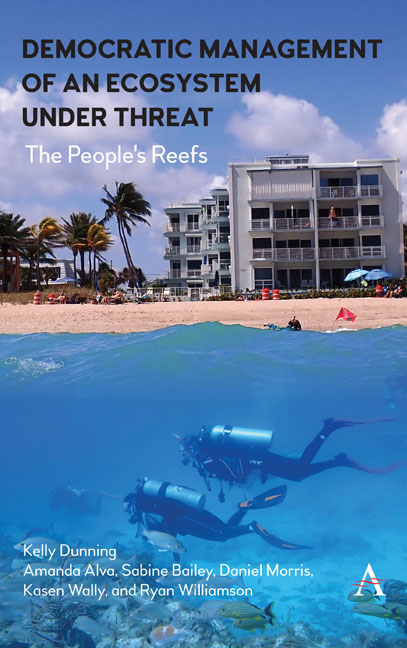Book contents
- Frontmatter
- Contents
- Miscellaneous Frontmatter
- Part 1 The Climate Change Challenge to Coral Reefs That Will Require Conservation Theory And Practice to Evolve
- Part 2 Case Studies
- Part 3 Summary and Conclusions
- Appendix Chapter 5
- Appendix Chapter 6
- Appendix Chapter 7
- Appendix Chapter 8
- Appendix Chapter 9
- Index
Chapter 5 - The Case of the Florida Reef Tract: Bureaucracies, Participation and Managing Novel Ecosystems
Published online by Cambridge University Press: 28 February 2024
- Frontmatter
- Contents
- Miscellaneous Frontmatter
- Part 1 The Climate Change Challenge to Coral Reefs That Will Require Conservation Theory And Practice to Evolve
- Part 2 Case Studies
- Part 3 Summary and Conclusions
- Appendix Chapter 5
- Appendix Chapter 6
- Appendix Chapter 7
- Appendix Chapter 8
- Appendix Chapter 9
- Index
Summary
The concept of a pristine coral reef, untouched and unspoiled, feels like a thing of the past. While we know they must exist and hear stories about their majestic beauty, they feel far away. Depending upon how you define a healthy coral reef, it is debatable if the word “pristine” accurately describes coral reefs at all. While beautiful and intact reef ecosystems certainly exist, are these reefs truly unspoiled? They may encounter the odd abandoned piece of fishing gear, the curious lack of a once abundant fish species or unseasonably warm ocean temperatures. Thus, are these places still pristine, or have they shifted to become something new?
Many people might not know that until fairly recently, they could find a healthy tropical coral reef at the southern tip of Florida in the United States. Until the 1980s, this 360 linear mile barrier reef—the Florida Reef Tract—was world-renowned as a premier dive site, showcasing rich collections of species (known as assemblages) and dense coral cover. In fact, the Florida Reef Tract is the third-largest barrier reef in the world.
Growing up in South Florida in the 1990s, stands of elkhorn coral on the reefs of the Florida Keys National Marine Sanctuary (FKNMS) were expected to be seen on dives, with their yellow, branching arms stretching through the clear water upward toward the light. In summer of 2022, while on a research dive, I recall crying out and pointing to a stand of elkhorn to a student simply because it has become such a rare sight in this short time, that it warrants a celebration.
Over the last 40–50 years, close to 90 percent of the living coral cover that comprised the Florida Reef Tract has been lost (Figure 5.1), and new species assemblages have begun to take their place (National Oceanic and Atmospheric Administration, 2022; Toth et al., 2019). Due to these significant changes, new forms of management have emerged to try and conserve what coral remains.
In this chapter, we explore two of the most visible and important case studies of coral reef management institutions from southern Florida: the case of the FKNMS and the case of the Southeast Florida Coral Reef Initiative (SEFCRI).
- Type
- Chapter
- Information
- Democratic Management of an Ecosystem Under ThreatThe People's Reefs, pp. 47 - 84Publisher: Anthem PressPrint publication year: 2023



